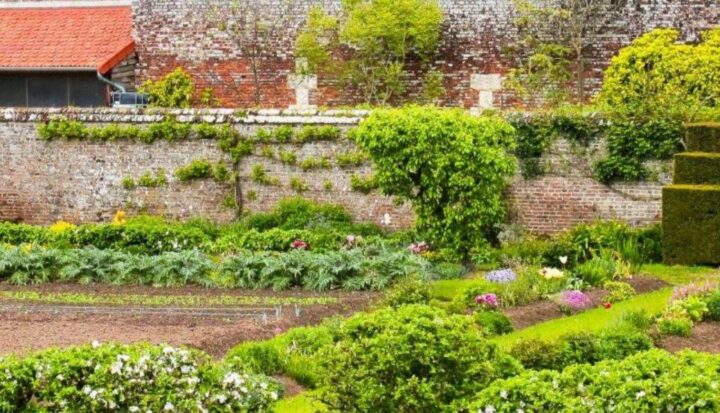
The Best castle gardens in Europe
Anyone who strolls here moves on the green tracks of the past. A discovery tour through castle gardens worth seeing from the west of Ireland via Salzburg to the heart of Tuscany.
They served to represent power and were at the same time places of staged joie de vivre. Many palace gardens in Europe are definitely baroque chic, just think of Versailles, Sanssouci or Herrenhausen.
But there is often much more to discover, as our journey to special, sometimes lesser-known palace gardens in Europe shows.
Hellbrunn: Where Neptune Sticks Out Its Tongue
“You would call it a fun park nowadays,” says an employee of the Hellbrunn Palace Park in Salzburg. But the bold water features were commissioned by a prince of the church as early as the 17th century.
Neptune, god of the sea, cheekily sticks his tongue out at everyone who comes by in the rain grotto. An artificial downpour is already falling on the visitors. A hydraulic water machine makes this fun possible. “The 400-year-old fountains are actually still originals,” says long-time castle manager Ingrid Sonvilla.
After these encounters with spray fountains and figures spouting water, accompanied by bird calls from music machines, the visitor strolls through the landscaped garden to dry off. It goes past giant trees, mystical grottos, carp ponds, secluded arbors and a stone theater. This Mannerist castle park is a total work of art based on the Italian model.
Kylemore Abbey: Journey to the Victorian Age
Like in a fairy tale, Kylemore Abbey towers with its turrets in the rugged landscape of Connemara in western Ireland. Benedictine nuns took over the castle in 1922, converted it into a monastery and restored the historic Victorian Walled Garden.
A high brick wall surrounds the 24,000 square meter Victorian walled garden full of vegetables, fruit and flowers. “Only plants that were around in the Victorian era grow in our garden,” says Anja Gohlke, the German-born head gardener at Kylemore Abbey.
Château de Miromesnil: Crazy in the kitchen garden
The Château de Miromesnil in Normandy is an insider tip. The owner of the castle, Nathalie Romatet, maintains the tradition of the “potager”, the kitchen garden.
Romatet calls her kitchen garden “an organized madness”. The beds are arranged geometrically in a very French way, but the exuberant floral splendor in the mixed borders of regional vegetables, berries and herbs gives it an English touch.
The potagers are attracting more attention in many places: more and more castles in Europe have been taking intensive care of their traditional kitchen gardens in recent years.
Altenstein Castle Park: Carpet-like ornamental beds
The “Big Carpet Bed” in the Altenstein Castle Park in Thuringia is a real eye-catcher among the castle gardens in Europe. More than 6000 plants grow on 130 square meters. These carpet-like decorative beds came into fashion in the second half of the 19th century. “A new motif was designed every year between 1890 and 1914,” says park manager Toni Kepper. “According to these templates, we replant every year.”
Cedars, golden ash trees, copper beeches, a Caucasian wingnut and a sequoia: majestic trees decorate the castle park. The garden artists Prince Hermann von Pückler-Muskau and Peter Joseph Lenné were involved in its design.
The Altenstein Castle landscape park south of Eisenach is the largest in Thuringia at 160 hectares. Due to its former small state, the state is full of castles with gardens. Many of these horticultural jewels have been repaired.
Vicobello: A place of fun
The origin of the castle gardens goes back to the Renaissance in Italy. The Chigi family has been tending their Italian garden in their Villa di Vicobello in Tuscany since the 16th century. Depending on the season, camellias and wisteria, azaleas and oleanders bloom on various terraces. In the lime garden, 250-year-old orange and lemon trees give off the scent. From many places there is a wide view of the city of Siena and the Tuscan countryside.
“The villa was built as a place of pleasure,” says host Agostino Anselmi Zondadari. “Even my great-grandmother enjoyed the picturesque sunset in our garden.”
Important to know: The gardens are not all open all year round. Some have an entrance fee. In spring and summer it blooms a lot. It is advisable to always inquire about current opening times before visiting.
Categories: General
